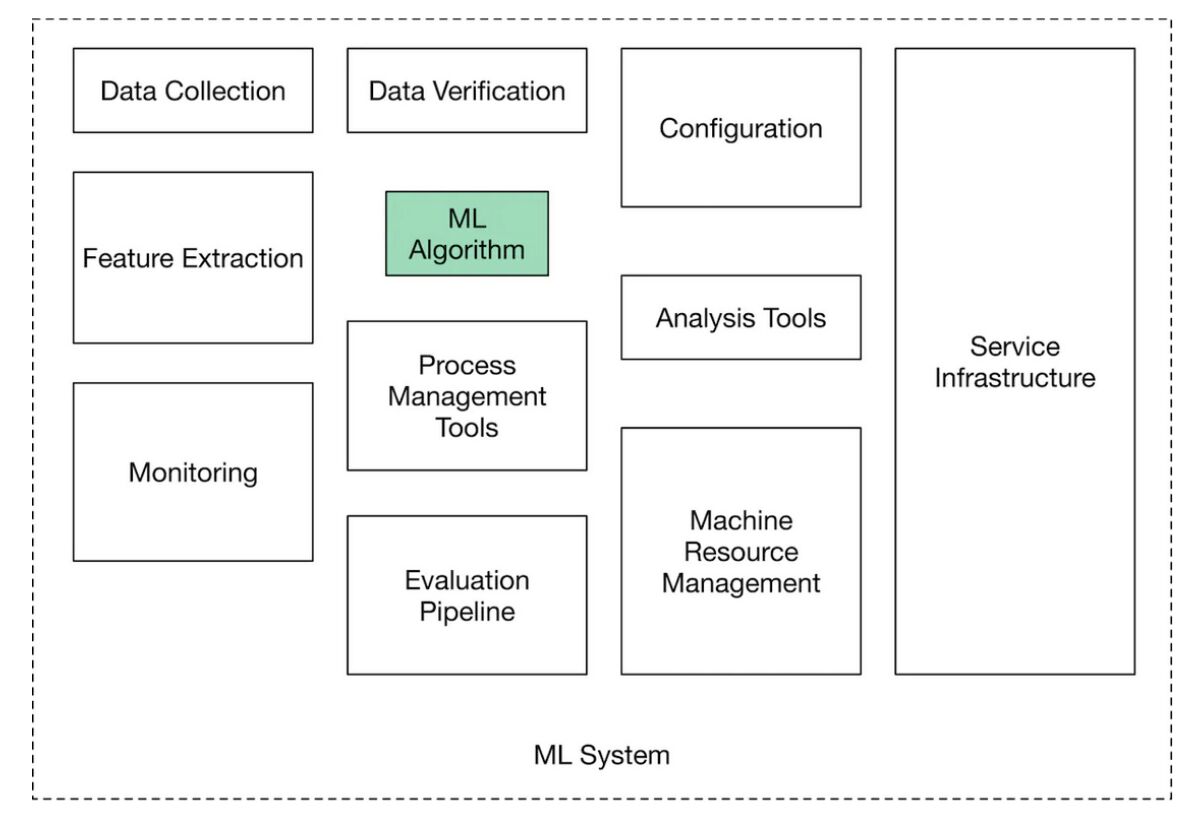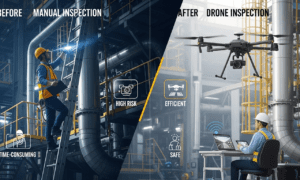Artificial Intelligence and Machine Learning have revolutionized the way we approach problem-solving and data analysis. These technologies are powering a wide range of applications, from recommendation systems and autonomous vehicles to drug discovery and fraud detection.
However, when it comes to the practical implementation of an ML system and its deployment, whether it’s intended for internal or external purposes, the process can be quite intimidating. It entails numerous intricate steps, and these complexities can frequently give rise to gaps that may ultimately lead to problems such as low accuracy, bias, or even prevent the project from reaching production.
“Designing and implementing machine learning systems involves more than just developing algorithms like linear regression or neural networks. Successful ML systems are intricate and multifaceted, encompassing various components to ensure optimal performance in real-world scenarios,” Shashank Bharadwaj, who manages product infrastructure end-to-end for a surgical robotics company, tells Techbullion.
While some individuals focus on data infrastructure, and others concentrate on the AI aspects, Bharadwaj has immersed himself in the entirety of this field throughout his decade-long professional journey. He has actively partnered with cross-functional teams, not only to construct resilient data pipelines, data services, and platform infrastructure, but also to empower data science, machine learning, and the creation of award-winning products. Consequently, he has acquired invaluable insights into key components essential for the successful development of ML systems and emerged as a thought leader in the space.
At Intuitive, a renowned company recognized for supplying surgeons with robotic systems for performing minimally invasive procedures, this tech expert effectively oversaw the implementation of an AI-driven educational platform. This platform is accredited by the Royal College of Surgeons of England. Additionally, he played a pivotal role in creating the MyIntuitive app, which seamlessly synchronizes with surgeon consoles. The app grants surgeons access to historical case data, encompassing instrument settings, and time estimates, enabling them to identify patterns and enhance their practices.
Similarly, in his previous roles at Ripple and Skyhigh Networks, Bharadwaj made notable contributions on both data and AI fronts. For the former, he helped develop a real-time ML platform that monitored network activity continuously and reported suspicious activity to prevent money laundering – and allow secure and compliant cross-border payments for over 200 financial institutions. Meanwhile, for the latter, he designed and deployed an AI platform that secured AI applications, the web, and the cloud while detecting and mitigating threats and identifying and securing the data.
“This cloud platform successfully identified and mitigated one of the first examples of an operationalized cloud-to-cloud threat in the enterprise. The platform’s threat protection feature, leveraging cross-tenant machine learning algorithms, detected and remediated over 100,000 failed Office 365 logins across 67 IP addresses and 12 networks, showcasing its effectiveness in identifying correlated anomalous behavior indicative of persistent threats that could have evaded detection,” he said.
How to build successful ML systems?
To achieve outcomes similar to these using machine learning systems, Bharadwaj asserts that practitioners must adhere to a comprehensive framework that encompasses all necessary aspects from start to finish.
To begin, he proposed that teams should aim for a clear understanding of the project and its intended application. They should engage with stakeholders to comprehend their requirements and expectations. This understanding will enable them to define the problem comprehensively, including its ultimate goals and any constraints that may apply.
Once the problem has been clearly defined, teams should ascertain whether it can be tackled using machine learning and prepare their data for training purposes. On the machine learning front, the problem should be framed in terms of supervised or unsupervised learning, classification or regression, and other pertinent characteristics. On the data side of the equation, the process should involve the collection, cleaning, and pre-processing of relevant information pertinent to the specific project.
Bharadwaj further mentioned that teams have the option to utilize tools and statistical techniques to address any deficiencies in their data while also reserving a portion of it for ultimate testing and validation purposes.
Once the data is prepared, the next step is transitioning to the development phase, where selecting the most appropriate algorithm for the specific problem is crucial. The chosen model must be trained using the curated dataset, with careful hyperparameter tuning, and subsequently validated using the dataset previously set aside for this purpose.
But getting the model ready with high-quality training data is never going to be enough. Post-development, the engineer said, it is necessary for the team involved to conduct tests and evaluate the performance of the model, tracking elements like its accuracy, precision, and recall. Iterating at this level leads to a high-performing model.
In the last phase, it becomes essential to deploy and monitor this model within a production environment. For deployment, Bharadwaj emphasized the need for teams to integrate it into the serving infrastructure while establishing mechanisms to manage scalability and ensure consistently low-latency responses.
Simultaneously, regarding monitoring, he mentioned the necessity of employing a specialized tracking and observability system, which actively monitors the model in real-time and triggers automated alerts upon detecting any anomalies. This system could either be developed in-house or obtained from an external provider, such as New Relic or Arize
Conclusion
By adhering to this well-structured framework, engineers can effectively navigate the intricate landscape of developing machine learning systems. This approach ensures that the entire end-to-end process is clearly defined, aligns with stakeholder expectations, and sustains high performance in real-world scenarios. It extends beyond the scope of mere model development, encompassing the complete lifecycle of a machine learning system, thereby fostering enduring success,” stated the expert.
In conclusion, the realm of Artificial Intelligence (AI) and Machine Learning (ML) is witnessing a transformative wave that is reshaping industries, accelerating innovation, and driving unparalleled growth. To provide a glimpse of the impact, consider this: In 2023 alone, global AI spending reached a staggering $327 billion, reflecting a remarkable 34% increase from the previous year.
Moreover, the significance of well-defined processes in ML development cannot be overstated. Engineers who follow a structured framework, encompassing data preparation, model selection, training, and deployment, are setting the stage for success. By adhering to this methodology, organizations can reduce development time by up to 40% and improve the accuracy of their models by as much as 25%. Developers and businesses that embrace this transformative collaboration, led by visionaries like Shashank Bharadwaj, are poised to shape the future of software innovation.




































